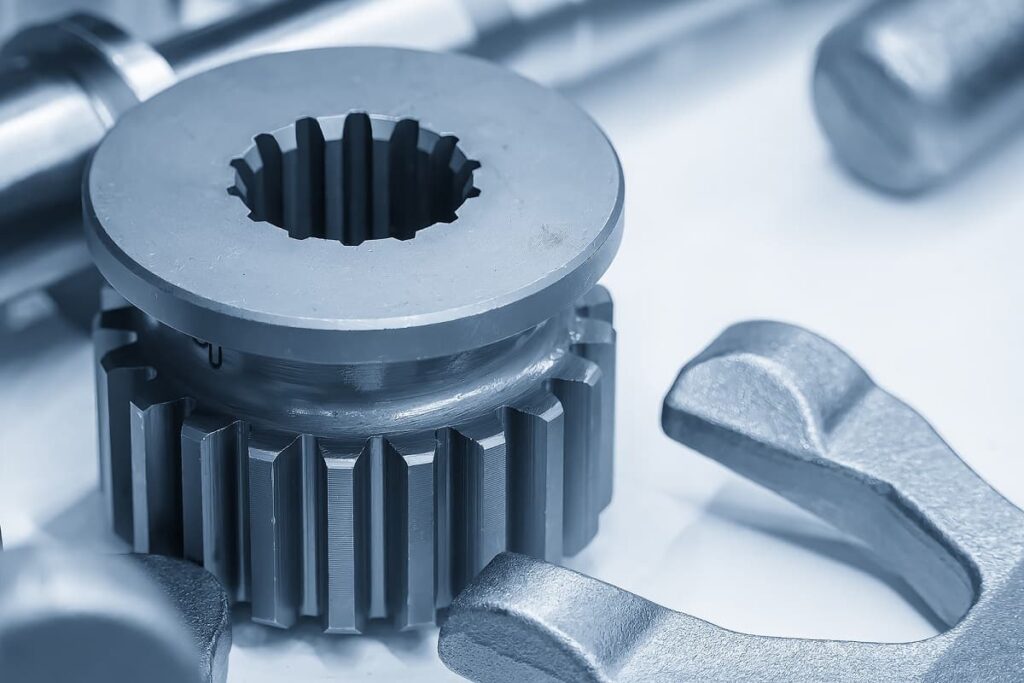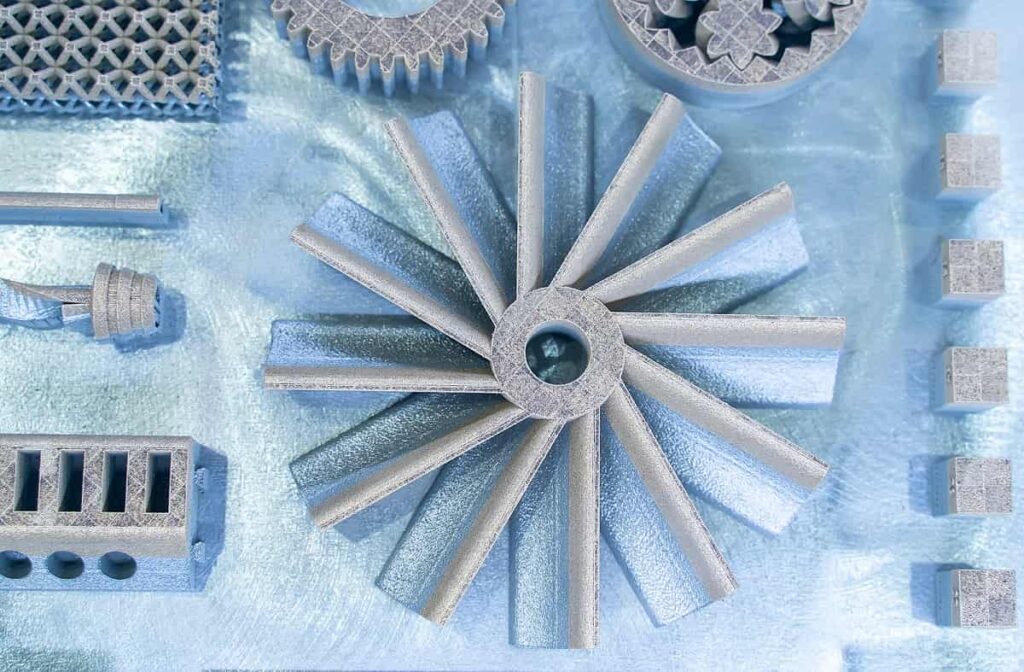The Top 5 3D Printer Companies Funded in 2016
Table of contents
Table of contents

After the hype bubble sent 3D printing stocks tumbling in 2014, the industry is starting to recover, shedding much of the fat associated with consumer 3D printing. Instead, industrial 3D printers have become the focus, with even desktop 3D printer manufacturers focusing heavily on the application of affordable 3D printing for prototyping and designing, rather than the idea of a 3D printer in every home. That shift in focus still hasn’t managed to affect 3D printer companies much as our Nanalyze 3D Printing Stocks motif has return -8% over the past year compared to a +2.5% change in the S&P500:
As industrial 3D printing continues to grow steadily, some important 3D printing firms have received significant investments, a vote of confidence for the 3D printing industry and the technology. Here are just five of the most important funding deals to have occurred in 2016, listed in order of largest to smallest investment.
Carbon
$81.1 million – Series C
We previously wrote about Carbon last year when they were called Carbon3D. Carbon is not just one of the biggest startups to receive funding this year, but one of the most important in the industry to date. With the firm’s Continuous Liquid Interface Production (CLIP) process, it’s possible to 3D print complete objects in less than ten minutes. Since our last article, they’ve actually unveiled their first 3D printer, the M1 which can be seen below:
More importantly, due to the materials used and the continuous nature of CLIP, those objects have mechanical properties similar to injection molded parts. There are no filament spools but simply just a pool of liquid from which the parts are slowly lifted out of. The technology may get even better as one of the world’s largest manufacturers, General Electric (NYSE:GE), has participated in the most recent investment round through GE Ventures. Along with Google Ventures, Autodesk, BMW, Sequoia Capital, and many others, Carbon has taken in a massive $222 million in funding so far. With Nikon and JSR, Carbon aims to expand its distribution abroad to Japan and other countries in Asia.
Desktop Metal
$52 million – Series B
Metal 3D printing is a crucial industrial technology, but it’s still mostly reserved for established, larger businesses. Perhaps more interesting than maybe the ability to 3D print metal objects on one’s desktop. Not a whole lot is known about the startup Desktop Metal, except that its Cofounder and CEO Ric Fulop is aiming to make fast and accessible metal printing system that can be used in an office setting. The firm’s leadership team consists of the Chairman of the Department of Material Science and Engineering at MIT, Chris Schuh, MIT Material Science professor Yet Ming Chiang, and Jonah Myerberg, who worked with Renovo Motors, Gradiant Corporation, and Fulop’s A123Systems. The public may not know much about Desktop Metal’s activities, but private investors do. The startup has raised $99.76 million so far, including the funds received from their most recent round that included GE Ventures and Saudi Aramco.
Formlabs
$35 million – Series B
XJet isn’t the only 3D printing startup Autodesk has confidence in. The software giant recently partnered with stereolithography startup Formlabs at the same time as it participated in a $35 million funding round led by the Foundry Group. Formlabs made our list of the “top-5 private 3D printing companies for investors to watch” and launched their first printer, the “Form 1”, on Kickstarter which successfully raised nearly $3 million in what was one of the most successful crowdfunding campaigns ever. The Company’s latest funding round also saw participation from DFJ Growth, Pitango Venture Capital and Pascal Cagni from C4 Ventures. Cagni, former head of Apple in Europe, joined Formlabs as a strategic advisor as the firm pushes into Europe, the Middle East, and Africa. Foundry Group Cofounder Brad Feld will join the Formlabs board. And Autodesk will work on software integration with Formlabs which has taken in a total funding of $55.8 million so far.
XJet
$25 million – Series C
One of the most exciting startups to officially unveil its technology this year is Israel’s XJet which has taken in a total of $56 million in funding so far. At RAPID 2016 this year, the firm showcased its NanoParticle Jetting process for the first time in public. NPJ uses a proprietary technology to deposit drops of metal nanoparticle inks from piezoelectric printheads onto a substrate to build a metal object layer by layer. Temperatures of up to 550°F/300°C within the heated build chamber cause the liquid agent carrying the metal to evaporate and the particles to fuse together.
NPJ is entirely unique from other metal printing technologies both in terms of process and output. XJet claims unprecedented layer thicknesses of 2 microns, unheard of in metal 3D printing, and printing speeds five times faster than laser sintering techniques. The speed of the process is further enhanced by the lack of post-processing required. NPJ parts don’t require support structures, making post-processing to remove those metal supports unnecessary. This further makes it possible to 3D print geometrically complex parts impossible with other metal printing techniques, such as moving gears printed in one piece. Founded by former Objet CEO Hanna Gothait, XJet is hardly an uninitiated startup, partially explaining the company’s recent $25 investment round led by Autodesk and Israeli-Chinese private equity fund Catalyst CEL.
Glowforge
$22 Million – Series B
Founded in 2014, Seatlle based startup Glowforge has taken in a total of $32.3 million in funding so far from lead investors Foundry Group (also a Formlabs investor) and True Ventures to develop the world’s first 3D laser printer. If you recall, 3D printing is called “additive” because you start with nothing and add to it. In the case of the Glowforge 3D printer, it is “subtractive” which means you start with a big block of something and then it lasers the isht out of it until you either have a “3D printed” part or an engraved part. Here’s what the Glowforge 3D laser printer looks like:
Glowforge’s claim to fame is that they ran the biggest 30-day crowdfunding campaign in history managing to sell a total $27.9 million worth of printers. In true crowdfunding form, they’ve managed to delay the delivery of their printers numerous times and as it turns out that they have already sold a total of $45 million in printers now without having shipped a single product to a non-beta customer. At least now we know where their latest funding round is going. More and more VC backed companies are using crowdfunding to pre-sell which should be a consolation to investors who are waiting to receive their printers. While many crowdfunded projects end up blowing up, this 3D printer will certainly be delivered based on the solid VCs Glowforge has backing them.
Conclusion
One takeaway from this article is that General Electric (NYSE:GE) is becoming very active in 3D printing investments. You might have heard that they spent somewhere in the range of $1 billion to purchase 3D printer companies Arcam and Concept Laser. 3D printing isn’t the only emerging technology that GE is tucking into. They also are establishing themselves as the leading Industrial Internet of Things company. If you’re a retail investor, there are a lot of things to like about GE as a large-cap play on a few very promising emerging technologies.
Sign up to our newsletter to get more of our great research delivered straight to your inbox!
Nanalyze Weekly includes useful insights written by our team of underpaid MBAs, research on new disruptive technology stocks flying under the radar, and summaries of our recent research. Always 100% free.





















Love the cover and your photography
Cheers for that!